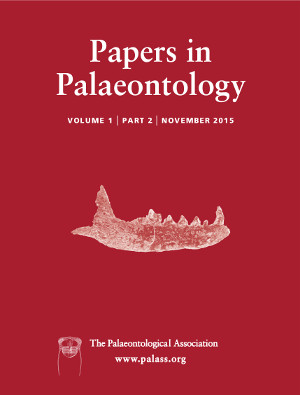Reg. Charity No. 1168330

A new decapod crustacean faunule is described from the early Miocene of the Slovenian part of the Styrian Basin. The Ivnik Beds exposed at the Činžat locality contain seven species: Calliax michelottii (Axiidea: Callianassidae), Lepidophthalmus paratethyensis sp. nov. (Axiidea: Callianassidae), Jaxea kuemeli (Gebiidea: Laomediidae), Styrioplax exiguus (Brachyura: Chasmocarcinidae), Goneplax gulderi (Brachyura: Goneplacidae), Neopilumnoplax pohorjensis sp. nov. (Brachyura: Mathildellidae) and Retropluma slovenica sp. nov. (Brachyura: Retroplumidae). Numerous specimens of well-preserved Styrioplax exiguus permitted its redescription and re-assignment of its familial placement to Chasmocarcinidae. Neopilumnoplax pohorjensis sp. nov. constitutes the first fossil occurrence of the genus known to date. The decapod association, as well as other faunal elements, suggests low-energy deep-water depositional environment with epibathyal water depth of more than 125 m. The studied locality is situated in the Ribnica–Selnica graben filled with sediments once deposited in the Central Paratethys sea. Based on the affinities of decapod genera of the Central Paratethys and the Proto-Mediterranean, we conclude that the exchange of decapod faunas between these regions was probably regulated by an anti-estuarine circulation permitting an easier incursion of species from the Proto-Mediterranean into the Paratethys and simultaneous hindering the Paratethyan endemics (Styrioplax) from entering the Mediterranean.